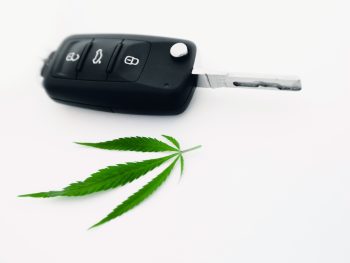There has been a 50% jump in drivers killed in collisions where the driver was under the influence of drugs, according to the AA Charitable Trust.
 The figures were revealed in the House of Lords last week by Transport Minister, Lord Hendy of Richmond Hill, in response to a question from the Lord Bishop of St Albans.
The figures were revealed in the House of Lords last week by Transport Minister, Lord Hendy of Richmond Hill, in response to a question from the Lord Bishop of St Albans.
Edmund King, director of the AA Trust, said: “Traditionally our safety message to drivers has always been: if you are going to drive, don’t drink and if you are going to drink, don’t drive. But now it is essential to update that messaging to include drugs. A startling 50% increase in drivers killed under the influence of drugs is extremely worrying. We don’t want drivers to be in any doubt – drink, drugs and driving do not mix.
“The police now have effective ways to test drivers for the presence of drugs at the roadside, but these figures show that too many drivers are dicing with drugs and death.”
Police now commonly use drug wipes known as ‘drugalysers’ at the roadside to check for cannabis and cocaine. The testing kit uses a mouth swab to check for the presence of drugs and a blue line appears if the person has taken them.
King went on: “We need drivers and their passengers to be well aware that drugs and driving don’t mix and when it comes to drugs or drink when driving, the best advice is none for the road.”
Chief constable Jo Shiner of the National Police Chiefs Council warned last year that there was a “social acceptance” of drug-driving, particularly among younger people.
Shiner had since said that the increase in drug-driving is now her “biggest concern”. As reported by the BBC, Shiner recently commented: “It worries me how many young people are using recreational drugs without realising how long they stay in their system and what the impact on their driving is.”
The police advise it’s an offence to drive with any of 17 controlled drugs above a specified level in your blood. This includes illegal and legally prescribed drugs.
Limits set for each drug are different, and for illegal drugs the limits set are extremely low. They aren’t zero to rule out any accidental exposure (e.g. from passive smoking).
Driving under the influence of drugs can affect driving in numerous ways. These include the ability to judge speed and distance, reaction and coordination skills, blurry or impaired vision and drowsiness, among other issues.
Drugs can also create a false confidence which can lead to an increase in risk-taking behaviour, which puts lives at risk.
Under the penalties for driving while impaired by drugs, convicted drivers can receive a criminal record, a maximum penalty of six months in prison, an unlimited fine and an automatic driving ban of at least one year (three years if you have been convicted twice in 10 years).
Other problems drug drivers may face include an endorsement on their driving licence for 11 years, an increased insurance premium and trouble travelling to countries such as the USA. If those convicted drive for work, the employer will see convictions on their driving licences.
Data on road injury collisions are reported by police using the STATS19 system. Police officers who attend the scene can assign factors to a driver if they believe that they may have contributed to the collision occurring.
The number of fatalities from collisions where the road safety factor “affected by drugs” was assigned to the driver of a motor vehicle for the years 2019 to 2023 are shown in the table below.
STATS 19 data on drug driver deaths for the last five years
| Year | Fatalities |
| 2019 | 90 |
| 2020 | 92 |
| 2021 | 78 |
| 2022 | 96 |
| 2023 | 144 |
Data for 2024 will be published in September 2025.

